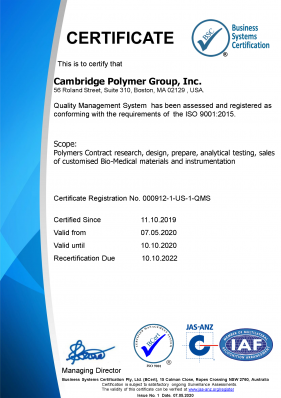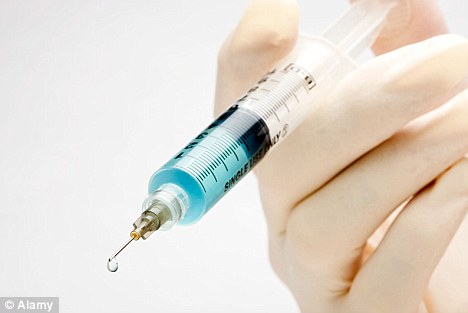
CPG Achieves ISO 9001:2015 Certification
Click to view certificate CPG Transitions from ISO 9001:2008 to the Updated ISO 9001:2015 Standard Cambridge Polymer Group is pleased to announce that it is now certified as an ISO 9001:2015 compliant organization by International Certifications Ltd. CPG is certified as meeting the requirements of ISO 9001:2015 for the following activities: Contract Research and Analytical […]

Origin of the Jack O’Lantern
Originally, “Jack o’lantern” meant “man with a lantern,” but was later used to describe the lights that floated over bogs, swamps and marshes. Before science provided possible explanations for these lights, many believed the illuminations to be wandering spirits. Irish children carved lanterns out of turnips and carried them about, simulating the floating lights to […]
Hydrogel Horticulture
Flowers usually open to the sun, but scientists at the University of North Carolina at Chapel Hill have engineered a polymer bloom that unfurls over the course of two hours, due to the location, strength and number of its molecular bonds. This feat of hydrogel horticulture isn’t just aesthetically pleasing, it also demonstrates how a […]
The Chemistry of Leaves
The New England office of Cambridge Polymer Group is fortunate to see the brilliant color display every fall as the foliage undergoes its autumnal transformation. Our work in polymer chemistry naturally starts us down the path of wondering what is happening to the leaves to cause this color change. The colors in leaves come from […]
Use of Morcellators to Perform Hysterectomies Declines
Use of power morcellators to perform hysterectomies declined after an April 2014 FDA warning, according to a study published in JAMA. Columbia University researchers examined hysterectomy trends before and after the 2014 warning that morcellation may cause the spread of cancer in patients with undetected sarcoma. Among women who underwent minimally invasive hysterectomy, power morcellation […]

Injectable Hydrogels for Weakened Hearts
Patients who have undergone a heart attack often have thinned-out or otherwise weakened heart walls, which can result in inefficient blood circulation and/or regurgitation, leaving the patient weakened and out of breath. Researchers at the University of Pennsylvania have developed a biodegradable hydrogel based on hyaluronic acid that can be injected into the walls of […]

Hands Off Triclosan
On Friday, September 2nd 2016, the FDA issued a final rule banning the use of 19 different chemicals in antibacterial soaps. The final rule applies to consumer wash products containing one or more of the 19 banned chemicals including the most commonly used ingredients in liquid and bar soaps, triclosan and triclocarban. According to the […]

ASTM Workshop on Reprocessing Re-Usable Medical Devices
CPG President Stephen Spiegelberg will be chairing the ASTM workshop “Reprocessing of Re-Usable Medical Devices” on November 15, 2016 in Orlando, Florida. A recent article in Medical Processing Outsourcing (June 2, 2015) estimates that reprocessed medical devices will grow by 19% annually to reach $2.58 billion in 2020. A key element of this successful growth […]

Green Olympic Pool Chemistry
If you watched the 2016 Summer Olympics in Rio, you probably noticed the diving pool turn a mysterious green midway through the games. Athletes have complained that it was difficult to see in the murky water, and some complained of irritated eyes. The director of the Olympic venues at Rio finally indicated that someone had […]

CPG Celebrates 20 Years
Cambridge Polymer Group is proud to be celebrating its 20th anniversary this summer. Started in the front room of an apartment in Arlington, MA by three MIT alumni, CPG has established an international reputation as a contract research and testing laboratory, with almost 900 clients. All three founders are still actively involved with the company. […]
